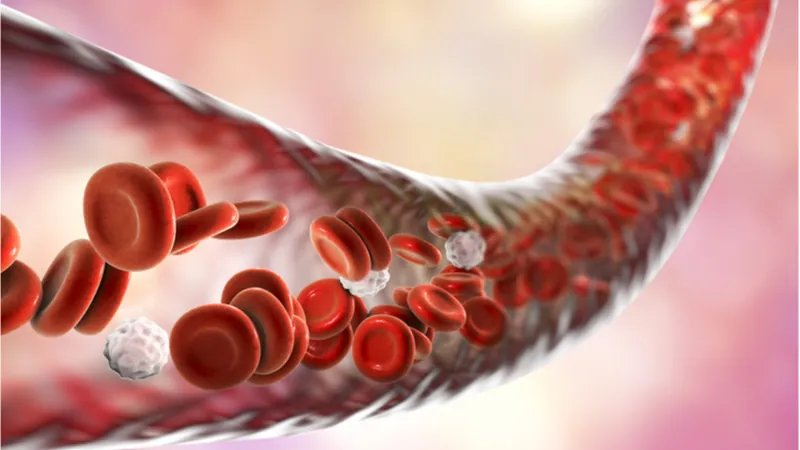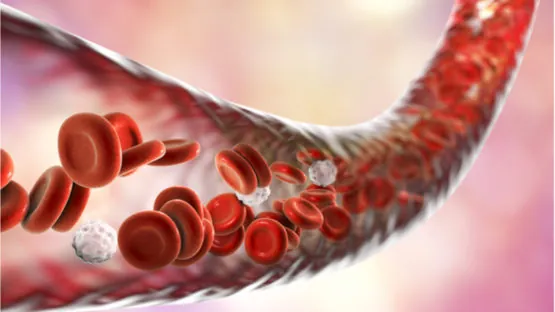Age-related changes to the signals sent and received by our cells travelling via the bloodstream (altered intercellular communication) are thought to be one of the reasons we age. A team of researchers, including Drs. Irina and Michael Conboy, has published the results of a new study suggesting that rejuvenation might be achieved by the calibration of these signals found in the blood [1].
The search for rejuvenation
The Conboys had done earlier research in joining of the circulatory systems between young and old animals, a process known as parabiosis, and they showed that tissue aging was not a one-way street and could be rapidly reversed in a matter of weeks, given access to the beneficial signaling from the younger animal [2].
Subsequent experiments discerned some of the particular molecules responsible for the rejuvenation effect along with the molecules responsible for driving aging and making tissue repair increasingly poor, which are found in aged blood.
Proteins such as TGF-β1 were found to prevent stem cells from repairing tissue properly in old mice, and they did the same thing when introduced to the bloodstreams of young mice. Most intriguing, when TGF-β1 was normalized to youthful levels in aged animals, the researchers also found that the old mice had youthful muscle regeneration and improved neurogenesis [3].
Over the course of a few years, it started to become apparent that there were only a handful of key molecules regulating the “age” of the bloodstream and the resulting lack of tissue regeneration.
This led some other researchers to begin searching for factors in young blood which might rejuvenate the old, and, as a result, the popular press was filled with stories of vampires and other nonsense a few years ago.
However, while the research showed that molecules present in young blood were beneficial to aged stem cells, the evidence suggested that the real culprit of age-related loss of tissue repair was the influence of age-accumulated inhibitory signaling proteins in aged tissues and circulation [4].
In other words, it was not so much that there was something special in young blood that could rejuvenate old tissues; instead, old blood had the wrong balance of signaling factors. The Conboys proposed that if the handful of key regulatory signalling molecules that they had identified could be calibrated back to more youthful levels, then rejuvenation should occur simply by restoring aged blood to being more youthful.
Recalibrating old blood to be young again
The new study suggests that the majority of aging is driven by changes to a limited number of regulatory signals present in blood. This is a reasonable hypothesis given that the bloodstream is the uniting communication network in the body and that the signals traveling through it do indeed have the potential to influence every cell within the body.
The study focuses on two of the key molecules that influence the ability of stem cells to function and regenerate tissues: TGF-β1, which increases during aging, and oxytocin, which falls during aging. Using a pharmacological approach, they were able to reduce TGF-β1 levels and increase oxytocin, spurring rejuvenation and leading to significantly increased neurogenesis, a reduction of neuro-inflammation, increased cognitive performance, and rejuvenation of the liver and muscle in aged mice.
The researchers also noted that recalibration of these signaling factors back to youthful levels additionally reduced the p16 biomarker of cellular senescence. This suggests that there was a reduction of the presence of senescent cells, another hallmark of aging. The researchers go as far as to suggest that the recalibration of signaling factors to a youthful profile may be a superior approach to removing senescent cells using senolytics, given how rapidly this recalibration works.
We hypothesize that altered intensities of a few morphogenic pathways account for most/all the phenotypes of aging. Investigating this has revealed a novel approach to rejuvenate multiple mammalian tissues by defined pharmacology. Specifically, we pursued the simultaneous youthful in vivo calibration of two determinants: TGF-beta which activates ALK5/pSmad 2,3 and goes up with age, and oxytocin (OT) which activates MAPK and diminishes with age. The dose of Alk5 inhibitor (Alk5i) was reduced by 10-fold and the duration of treatment was shortened (to minimize overt skewing of cell-signaling pathways), yet the positive outcomes were broadened, as compared with our previous studies. Alk5i plus OT quickly and robustly enhanced neurogenesis, reduced neuro-inflammation, improved cognitive performance, and rejuvenated livers and muscle in old mice. Interestingly, the combination also diminished the numbers of cells that express the CDK inhibitor and marker of senescence p16 in vivo. Summarily, simultaneously re-normalizing two pathways that change with age in opposite ways (up vs. down) synergistically reverses multiple symptoms of aging.
Conclusion
We have been following the work of the Conboys for a number of years now, and we are enthusiastic about the potential of their work. The recalibration of signaling factors to more youthful levels has the potential to improve regeneration in aged tissues and cells, and, looking at the research so far, it appears to be controlled by only a handful of signaling molecules sitting atop a regulatory network. While metabolism is highly complex, it appears that this complexity is controlled by only a small number of master regulators, and if their levels can be calibrated as the Conboys propose, then there exists the potential for rejuvenation of tissues and organs.
Literature
[1] Mehdipour, M., Etienne, J., Chen, C. C., Gathwala, R., Rehman, M., Kato, C., … & Conboy, I. M. (2019). Rejuvenation of brain, liver and muscle by simultaneous pharmacological modulation of two signaling determinants, that change in opposite directions with age. Aging, 11(15), 5628-5645.
[2] Conboy, I. M., Conboy, M. J., Wagers, A. J., Girma, E. R., Weissman, I. L., & Rando, T. A. (2005). Rejuvenation of aged progenitor cells by exposure to a young systemic environment. Nature, 433(7027), 760-764.
[3] Yousef, H., Conboy, M. J., Morgenthaler, A., Schlesinger, C., Bugaj, L., Paliwal, P., … & Schaffer, D. (2015). Systemic attenuation of the TGF-β pathway by a single drug simultaneously rejuvenates hippocampal neurogenesis and myogenesis in the same old mammal. Oncotarget, 6(14), 11959.
[4] Rebo, J., Mehdipour, M., Gathwala, R., Causey, K., Liu, Y., Conboy, M. J., & Conboy, I. M. (2016). A single heterochronic blood exchange reveals rapid inhibition of multiple tissues by old blood. Nature communications, 7.




